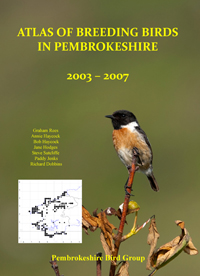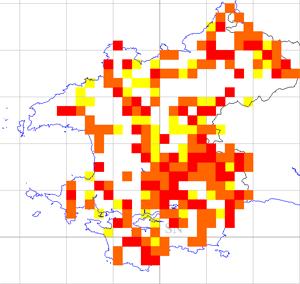Breeding resident
The Great Spotted Woodpecker was classified as a rare occasional visitor by Mathew (1894), who listed only six occurrences. The diaries of Lloyd for 1927-1934 document a fairly widespread but patchy distribution, and contain remarks such as "they must have spread strongly" since Mathew's time. T.A.W. Davis noted that they first established themselves at St Ishmael's in 1939. Lockley et al. (1949) considered that they were widely distributed in well-wooded country, with scattered pairs throughout the county. Saunders (1976) assessed the species as widespread in small numbers throughout Pembrokeshire's woodlands.
Although the much harder winters of the early 1960s apparently had no effect, the cold snap of winter 1979 markedly reduced the population; for example, five pairs breeding in Hylton Woods in 1978 were reduced to a single unmated bird in the summer of 1979, and even by 1983 there had only been a recovery to two pairs. In consequence, the surveyors engaged in the Breeding Birds Survey of 1984-1988 found some woods contained old borings but no woodpeckers. At an average density of three to four pairs per occupied tetrad the county total was probably about 500-700 pairs at the end of the survey, but the total was undoubtedly greater prior to 1979.
Great Spotted Woodpeckers sometimes wander onto the cliffs of the outer coast in the autumn, as at Strumble Head in 1981, 1986 and 1990, and reached Skomer in 1962 and 1964.

Fieldwork 1984-88 (based on 478 tetrads)
Red = breeding confirmed = 45
Orange = breeding probable = 49
Yellow = breeding possible = 78
Total tetrads in which registered = 172 (36%)
Donovan J.W. & Rees G.H (1994), Birds of Pembrokeshire
 Sunday, August 25, 2013 at 8:46AM
Sunday, August 25, 2013 at 8:46AM 





